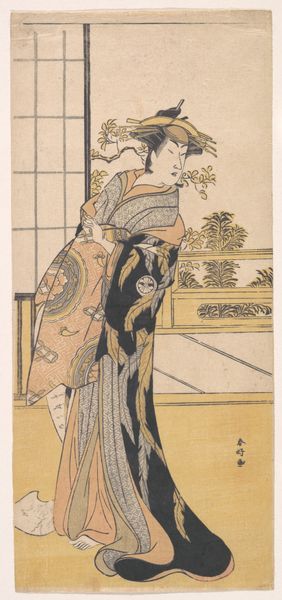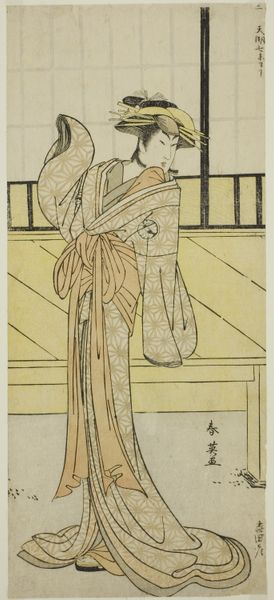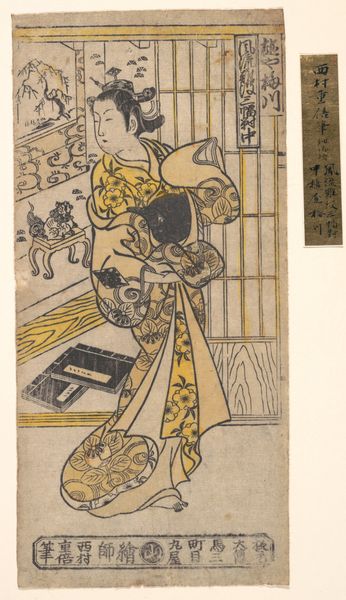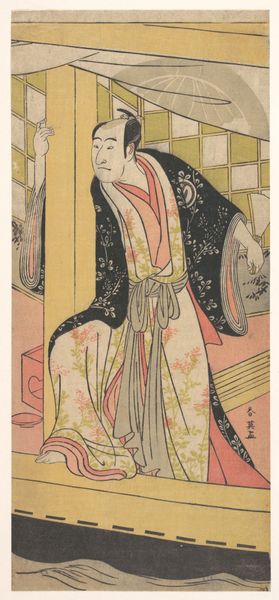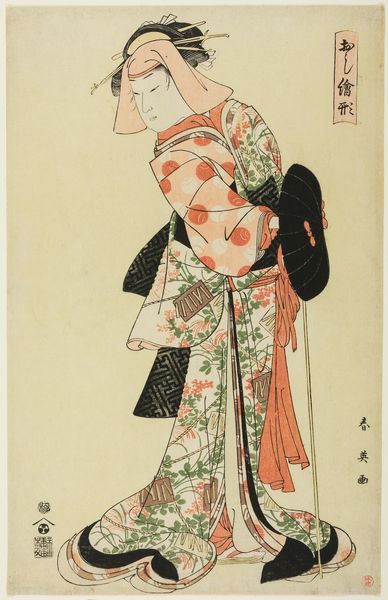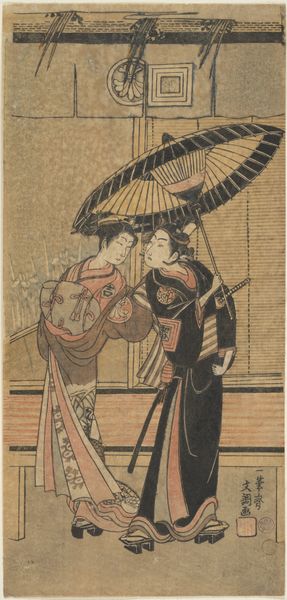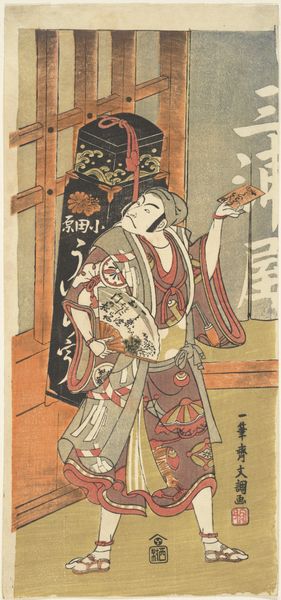
Actor Tsu-uchi Monsaburo in a Woman's Role in the Play "Three Instances of Good Fortune (Sanpuku Tsui)" 1720 - 1740
0:00
0:00
print, woodblock-print
#
portrait
# print
#
asian-art
#
ukiyo-e
#
figuration
#
woodblock-print
#
erotic-art
Dimensions: H. 12 1/16 in. (30.6 cm); W. 6 in. (15.2 cm)
Copyright: Public Domain
Editor: This woodblock print, “Actor Tsu-uchi Monsaburo in a Woman's Role in the Play 'Three Instances of Good Fortune (Sanpuku Tsui)'" by Tamura Sadanobu, dates from 1720 to 1740. The actor is captivating; he is embodying a female role, but his downcast gaze and still posture create an interesting tension with the rich color and flamboyant patterns in the clothing. How do you interpret this interplay of stillness and spectacle? Curator: The symbols speak volumes. This Kabuki actor embodies "onnagata," a male performer specializing in female roles. The fan hints at both hidden emotions and refined aesthetics, reflecting the cultural memory of theatrical traditions. Notice the specific imagery woven into the garment – can you see the landscapes within the robes? Editor: I do, there seems to be little rivers and landscapes detailed throughout the fabric. Are these visual cues telling us more about the play's narrative, or about the actor himself? Curator: Possibly both. These details embedded within the fabric echo nature, freedom, and even escapism, all recurring themes in Edo period art and theatre. Ukiyo-e prints such as this one preserved those moments and memories with those icons embedded. They were often targeted at theatre patrons and even at times erotically charged. Now, consider what it means for a male actor to wear these symbols of femininity and nature – how does that challenge or reinforce societal norms of the time? Editor: That gives me so much to think about. It's a complex layering of identity, performance, and cultural symbolism that is fascinating. Curator: Indeed, and it continues to resonate today, prompting us to reflect on how we perform and perceive identity. Editor: I never would have picked up on so many of these meanings myself. I'll never look at ukiyo-e prints the same way again.
Comments
No comments
Be the first to comment and join the conversation on the ultimate creative platform.
